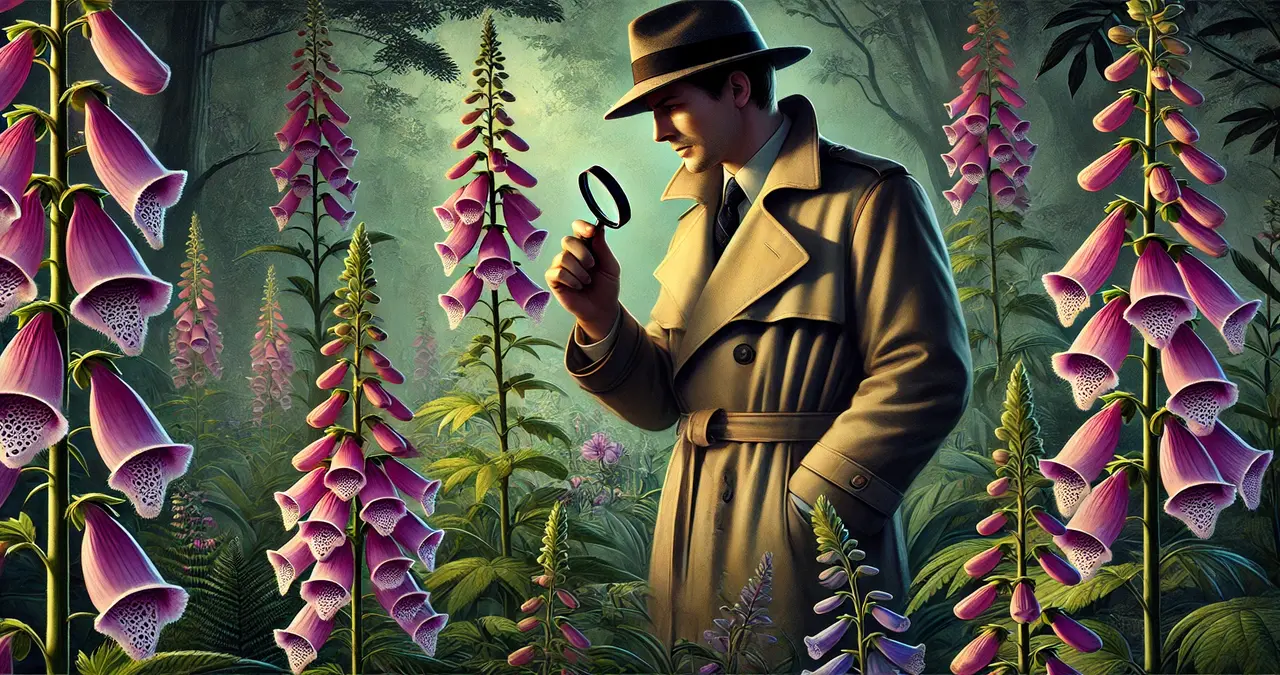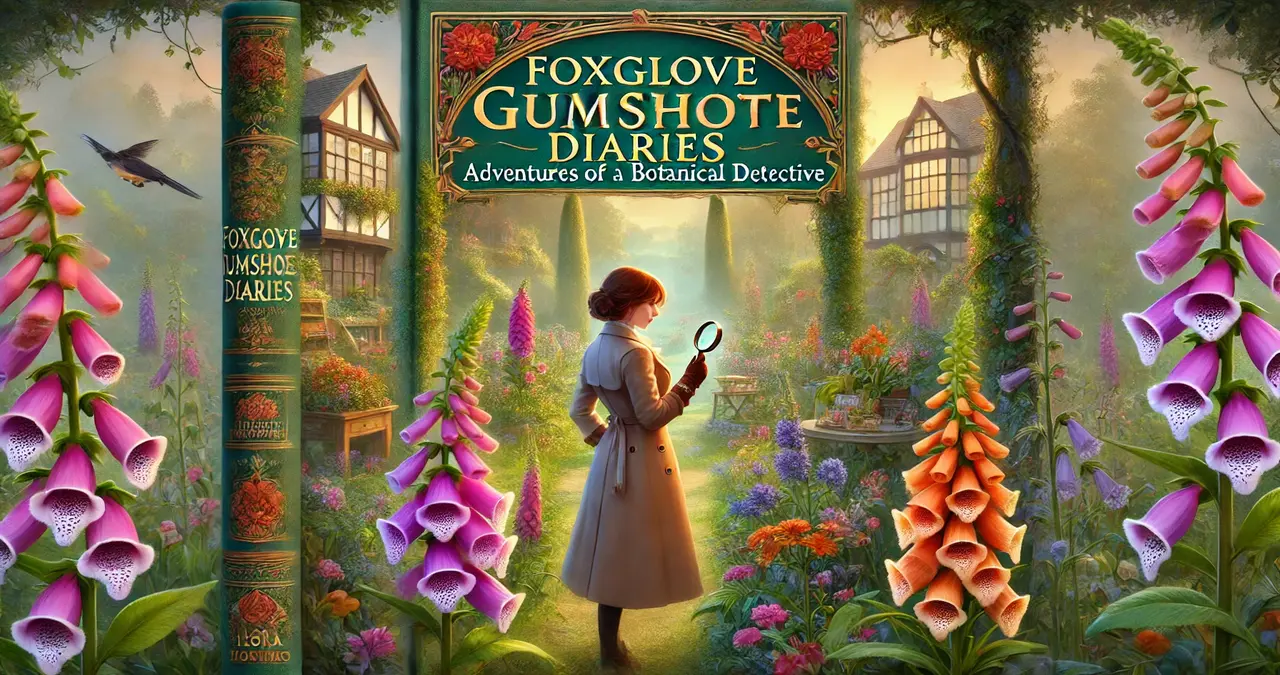Table of Contents
ToggleIntroduction:
In detective fiction, authors often seek innovative twists to captivate readers. The concept of a “Foxglove Gumshoe” introduces a thrilling blend of botanical mysteries with classic sleuthing skills. This unique crossover appeals to a diverse audience, combining the intricate knowledge of plant life with the analytical prowess of detective work. In this article, we’ll explore how merging these two worlds creates a riveting narrative framework, delve into the symbolism of the foxglove, and examine the potential for educational and entertaining storytelling.
The Essence of the Foxglove Gumshoe:
The “Foxglove Gumshoe” isn’t just a character; it’s a concept that embodies the intersection of nature and noir. Picture a detective with expertise in botany whose ability to solve crimes is enhanced by a deep understanding of plants. The foxglove flower, known for its stunning beauty and poisonous qualities, symbolizes the dual nature of this character—capable of healing and harm. This dichotomy adds a layer of complexity to the character’s role in mysteries, where they use their botanical knowledge to uncover truths hidden in plain sight.
Historical Roots of Botanical Sleuthing:

Historically, Foxglove Gumshoe plants have played critical roles in medicine, poisoning, and forensics. Referencing real-life figures like Arthur Conan Doyle, a trained physician before creating Sherlock Holmes, lends authenticity to the Foxglove Gumshoe. Doyle’s medical background informed many of Holmes’s investigative techniques, particularly in stories involving poisons derived from plants. By integrating botanical sleuthing into fiction, writers can draw on a rich history of ethnobotany and forensic science to enhance the believability of their narratives.
Botanical Mysteries in Literature:
Literature has a storied tradition of intertwining flora with mystery. Agatha Christie, a pharmacist’s assistant before becoming the queen of crime, frequently used her chemical expertise to craft her plots. A Foxglove Gumshoe could similarly employ botanical toxins or plant-based clues that lead to case breakthroughs, providing a fresh take on the whodunit format. Books like “The Signature of All Things” by Elizabeth Gilbert also explore characters with deep botanical knowledge, proving the effectiveness of combining these elements in storytelling.
Educational Opportunities:
A series featuring a Foxglove Gumshoe could be educational, introducing readers to the fascinating world of plants through engaging narratives. Each novel or story could focus on a different plant, weaving factual information about its uses and dangers into the plot. This approach not only entertains but also educates, providing readers with knowledge about botany that could be applied in real life.
Character Development and Challenges:
Creating a believable Foxglove Gumshoe requires careful character development. The protagonist must have credible botanical knowledge, which could be depicted through their background in botany, perhaps as a former scientist or a hobbyist turned detective. Their challenges can stem from the misuse of plants, rare botanical poisons, or environmentally tied crimes, setting the stage for intriguing plots and complex character interactions.
Potential Plot Lines:
The Deadly Bouquet:
Our gumshoe investigates a series of murders, each victim found with a different toxic plant. The solution lies in understanding the subtle messages sent by the choice of plants.
Conservatory Conundrums:
A rare plant is stolen from a botanical garden, and its disappearance could signal a breakthrough in cancer research. The Foxglove Gumshoe must navigate a world of plant smugglers and black-market dealers.
The Pollen Path:
Pollen becomes a critical piece of evidence in solving a cold case. Our detective uses their botanical skills to trace the pollen to a specific location and timeframe.
Incorporating Modern Environmental Themes:
The Foxglove Gumshoe series can also touch on modern environmental issues, such as habitat destruction, endangered species, and biopiracy. These themes can drive the narrative and give the characters a broader purpose—safeguarding nature’s secrets while bringing criminals to justice.
Conclusion:
The Foxglove Gumshoe concept offers a refreshing twist to detective fiction by blending botanical knowledge with investigative prowess. This blend makes for intriguing mysteries and highlights the importance of plants in our world. As our gumshoe unravels complex cases with the aid of nature, readers gain an appreciation for both the art of detection and the science of botany. By fostering a connection to the natural world, the Foxglove Gumshoe symbolizes how understanding our environment can lead to solving even the darkest of mysteries.
Call to Action:
Dive into the world of botanical mysteries with the Foxglove Gumshoe. Whether you are a mystery enthusiast, a nature lover, or both, there is something in these stories for you. Explore this unique genre blend and discover how even the most familiar landscape can conceal secrets worth uncovering.
FAQS
What is a Foxglove Gumshoe?
A Foxglove Gumshoe is a fictional detective specializing in solving mysteries using their extensive knowledge of botany, mainly focusing on the properties and uses of plants like the foxglove, known for its beauty and toxic properties.
How does botanical knowledge help in solving crimes in these stories?
In these stories, the Foxglove Gumshoe uses botanical knowledge to identify plant-based poisons, decipher clues hidden in floral arrangements, or trace the origins of rare plants that could be linked to crime scenes. This specialized knowledge often provides the key to unlocking mysteries that baffle other investigators.
Are there real-life examples of crimes solved using botany?
There are several real-life instances where botanical knowledge has helped solve crimes. For example, plant material can be used as evidence in cases where it might link a suspect to a crime scene, identify the time of a crime based on pollen analysis, or determine the cause of death by detecting plant-based toxins.
Can the Foxglove Gumshoe concept be educational?
Absolutely! A series centered around a Foxglove Gumshoe could educate readers about various plants, their properties, their ecological importance, and their role in forensics and medicine. Each story could highlight different botanical facts and environmental issues, making it a valuable educational tool wrapped in an engaging narrative.
Where can I read more about the Foxglove Gumshoe or similar stories?
While the Foxglove Gumshoe is a conceptual character, readers interested in similar themes can explore books like “Elizabeth Gilbert’s The Signature of All Things” or check out mystery novels by Agatha Christie that involve plant-based poisons. Additionally, readers might find anthologies of botanical mysteries or crime stories featuring forensic botany in their local library or bookstore.















